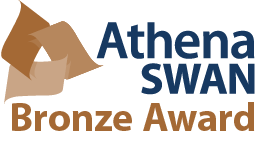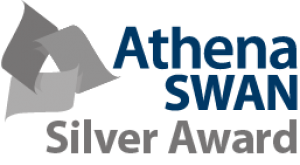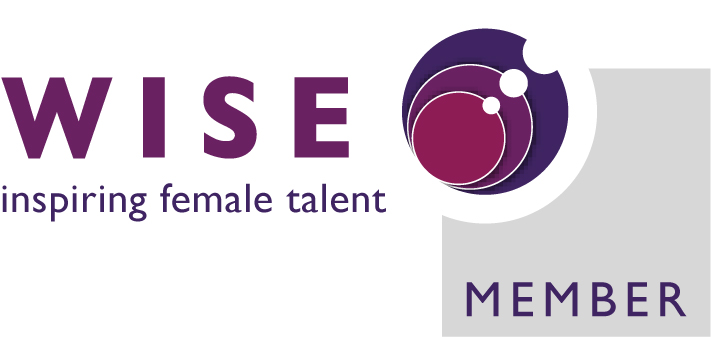You are here
- Home
- Dr e.a. Moore
Dr e.a. Moore
Professional biography
Reader in Theoretical Chemistry
Co-author of Solid State Chemistry: An Introduction, (4th edition) Taylor and Francis Group LLC, 2012..
My main research interest is in computational solid state chemistry, particularly in the effect of point defects on properties of the solid. A recent project applies computational chemistry to biological chemistry.
Research interests
The properties of solids are often profoundly changed by the substitution of a small number of atoms (dopant atoms) by atoms of a different element. I am interested in using different computational techniques to rationalise and predict structures, magnetic and electrical properties of solids containing dopant atoms. Atomistic simulation is used to determine the preferred location of dopant atoms. Magnetic ordering, band structure and band gaps are investigated using ab initio methods.
A recent extension to this work is the use of atomistic simulation to study biological molecules.
Previously I worked on the theory and calculation of parameters describing magnetic resonance spectra and still retain some interest in this area.
Current Research Interests
Exploration of band structure and spin states of transition metal oxides
This uses ab initio calculations to explore the effect of point defects and atom substitution on transition metal oxides. Substitution of different atoms can lead to a solid becoming or ceasing to be ferromagnetic, or acquiring increased magnetoresistance. Such properties are exploited in the electronics industry.
Nano particle catalysts for direct oxidation fuel cells
Modelling of pairing of modified DNA bases
The aim of this project is to model base pairing in cases like these to aid in our understanding of why some modifications lead to incorrect pairing but not others.
Teaching interests
My teaching interests are mainly in inorganic and theoretical chemistry and I was chair of the residential school module Transition Metal Chemistry:Synthesis and Structure, SXR343. I also contributed to Inorganic Chemistry, S343, Metals and Life 347 and an analytical science module, S240.
I am currently chairing a new level 2 chemistry module, S215 Chemistry:essential concepts which is delivered entirely onscreen.
In the past I have contributed to The Molecular World, S205, The Quantum World, SM358, and Planetary Science and the search for Life, S283. I also made contributions to several courses that are no longer presented: Discovering Science, S103, Inorganic Chemistry: Concepts and Case Studies, S247, Astronomy and Planetary Science, S281 and Matter in the Universe, S256.
With Dr. L. E. Smart I have produced an undergraduate textbook in Solid State Chemistry which is now in its 4th edition : Solid State Chemistry: An Introduction, L. E. Smart and E. A. Moore, CRC Press, Taylor and Francis Group LLC, 2012.
I have also delivered lectures in computational chemistry to M.Sc. students in Ethiopia and Sudan.
Research groups
| Name | Type | Parent Unit |
|---|---|---|
| Biomedical Research Network (BRN) | Network | Faculty of Science |
| Centre for Earth, Planetary, Space and Astronomical Research (CEPSAR) | Centre | Faculty of Science |
Publications
Journal articles
Computational modeling of the defect structure, hyperfine and magnetic properties of the Mn2+-doped magnetite of the composition Mn Fe3-O4 (y = ⅔ x) (2023-03)
Al-Rashdi, K. S.; Elzain, M. E.; Al-Barwani, M. S.; Moore, E. A. and Widatallah, H. M.
Materials Research Bulletin, 159, Article 112095
Emerging technologies: general discussion (2021-07)
Bardow, Andre; Bizzarri, Claudia; Cao, Xiangkun Elvis; Cowan, Alexander J.; Cummings, Charles; Del Angel Hernandez, Veronica; Doan, Huan; Dowson, George; Ghosh, Sourav; Gil, Vanesa; Gugujonovic, Katarina; Kamali, Ali Reza; König, Max; Leitner, Walter; Luo, Jisiwei; Madhav, Dharmjeet; Maneiro, Marcelino; Manyar, Haresh; McCord, Stephen; Moore, Elaine; North, Michael; Pant, Deepak; Perry, Samuel; Poon, Jeffrey; Rossi, Liane; Ruiz Esquius, Jonathan; Schreiber, Moritz; Shozi, Mzamo; Sick, Volker; Styring, Peter; Tanveer, Waqas; Thomas, Ollie; Whiston, Keith and Yu, Eileen
Faraday Discussions, 230 (pp. 388-412)
Structural, 57 Fe Mössbauer and XPS studies of mechanosynthesized nanocrystalline Nd0.33Eu0.67Fe1-xCrxO3 particles (2020-12)
Al-Rashdi, K. S; Widatallah, H. M; Elzain, M. E; Gismelseed, A. M; Al-Rawas, A. D; Myint, M. T. Z; Al Mawali, F; Al-Harthi, S. H; Moore, Elaine and Crabb, Eleanor
Materials Research Bulletin, 132, Article 111004
Fluorinated perovskite as magnetic spin-polarised semiconductor (2019-06)
Moore, E. A.; Mohammed, A. A.; Widatallah, H. M. and Arbab, A. I.
Solid State Communications, 264 (pp. 39-42)
Atomistic and ab initio DFT modelling of the defect structures in Al3+/Cr3+-doped and co-doped Y3Fe5O12 (2018-08)
Widatallah, Hisham M.; Al-Barwani, Muataz S.; Moore, Elaine A. and Elzain, Mohamed E.
Journal of Physics and Chemistry of Solids, 119 (pp. 100-106)
New insights on repellent recognition by Anopheles gambiae odorant-binding protein 1 (2018-04-03)
Tzotzos, George; Iley, Jim N. and Moore, Elaine A.
PLoS ONE, 13, Article e0194724(4)
The effect of S-substitution at the O6-guanine site on the structure and dynamics of a DNA oligomer containing a G:T mismatch (2017-09-14)
Moore, Elaine Ann and Xu, Yao-Zhong
PLoS ONE, 12, Article e0184801(9)
Computational modelling of inorganic solids (2013)
Moore, Elaine Ann
Annual Reports on the Progress of Chemistry, Section A: Inorganic Chemistry, 109 (pp. 421-435)
Computational modelling of inorganic solids (2012-07)
Moore, Elaine Ann
Annual Reports on the Progress of Chemistry, Section A: Inorganic Chemistry, 108(1) (pp. 449-463)
Atomistic simulation and ab initio study of the defect structure of spinel-related Li0.5-0.5xMgxFe2-0.5xO4 (2012)
Widatallah, H. M.; Moore, E. A.; Babo, A. A.; Al-Barwani, M. S. and Elzain, M.
Materials Research Bulletin, 47(12) (pp. 3995-4000)
Formation, cationic site exchange and surface structure of mechanosynthesized EuCrO3 nanocrystalline particles (2011-07)
Widatallah, H. M.; Al-Harthi, S. H.; Johnson, C.; Klencsár, Z.; Gimelseed, A. M.; Moore, E. A.; Al-Rawas, A. D.; Wynter, C. I. and Brown, D. E.
Journal of Physics D: Applied Physics, 44, Article 265403(26)
Structure and magnetic properties of the cubic oxide fluoride BaFeO2F (2011-06)
Berry, Frank J.; Coomer, Fiona C.; Hancock, Cathryn; Helgason, Őrn; Moore, Elaine A.; Slater, Peter R.; Wright, Adrian J. and Thomas, Michael F.
Journal of Solid State Chemistry, 184(6) (pp. 1361-1366)
Computational modelling of inorganic solids (2011-05-20)
Moore, Elaine
Annual Reports on the Progress of Chemistry, Section A: Inorganic Chemistry, 107 (pp. 459-472)
Fluorination of perovskite-related phases of composition SrFe1-xSnxO3-delta (2009-06-24)
Berry, Frank J.; Bowfield, Andrew F.; Coomer, Fiona C.; Jackson, Simon D.; Moore, Elaine A.; Slater, Peter R.; Thomas, Michael F.; Wrtght, Adrian J. and Ren, Xiaolin
Journal of Physics: Condensed Matter, 21(25) (p 256001)
The Formation of Nanocrystalline SrFeO3−δ Using Mechano-Synthesis and Subsequent Sintering: Structural and Mössbauer Studies (2009-04)
Widatallah, H. M.; Al-Rawas, A. D.; Johnson, C.; Al-Harthi, S. H.; Gismelseed, A. M.; Moore, E. A. and Stewart, S. J.
Journal of Nanoscience and Nanotechnology, 9(4) (p 2510)
Magnetic order in tin-doped thiospinels (2009-02-15)
Berry, F. J.; Lyubutin, I. S.; Moore, E. A.; Thomas, M. F. and Dmitrieva, T. V.
Materials Chemistry and Physics, 113(2-3) (pp. 714-716)
Synthesis and structural investigation of a new oxide fluoride of composition Ba2SnO2.5F3·xH2O (x≈0.5) (2008-09)
Berry, Frank J.; Moore, Elaine; Mortimer, Michael; Ren, Xiaolin; Heap, Richard; Slater, Peter and Thomas, Michael F.
Journal of Solid State Chemistry, 181(9) (pp. 2185-2190)
Computational modelling of inorganic solids (2008-04-25)
Moore, Elaine
Annual Reports on the Progress of Chemistry, Section A: Inorganic Chemistry, 104 (pp. 46-63)
Magnetic order in perovskite-related SrFeO2F (2008)
Berry, F. J.; Heap, R.; Helgason, O.; Moore, E. A.; Shim, S.; Slater, P. R. and Thomas, M. F.
Journal of Physics: Condensed Matter, 20(21) (pp. 215207-215212)
Iron-57 Mössbauer spectroscopic study of fluorinated strontium orthoferrite (2008)
Berry, F. J.; Moore, E. A.; Ren, X.; Helgason, Ö.; Thomas, M. F. and Shim, S.
Hyperfine Interactions, 185(1-3) (pp. 111-114)
First-principles study of the mixed oxide α−FeCrO3 (2007-11-02)
Moore, Elaine
Physical Review B, 76, Article 195107(19)
Iron(III) as a defect in diantimony tetroxide (2007-08-04)
Moore, Elaine and Widatallah, Hisham
Materials Research Bulletin, 43(8-9) (pp. 2361-2367)
Periodic ab initio calculation of nuclear quadrupole parameters as an assignment tool in solid state NMR spectroscopy: applications to ²³Na NMR spectra of crystalline materials (2005-05)
Johnson, Clive; Moore, Elaine A. and Mortimer, Michael
Solid State Nuclear Magnetic Resonance, 27(3) (pp. 155-164)
Defect clusters in titanium-substituted spinel-related lithium ferrite (2004-10)
Widatallah, H.M. and Moore, E.A.
Journal of Physics and Chemistry of Solids, 65(10) (pp. 1663-1667)
The Magnetic hyperfine field in tin-doped Fe3O4: variations during oxidation and subsequent phase transformations (2004-07-21)
Berry, Frank; Helgason, Om; Moore, Elaine; Mosselmans, Frederick and Ren, Xiaolin
Journal of Physics: Condensed Matter, 16(28) (pp. 5119-5128)
Ab initio calculations of Co shielding in model complexes (2002-08-31)
Moore, Elaine A.
International Journal of Molecular Sciences, 3(8) (pp. 873-887)
Tin-, titanium-, and magnesium-doped alpha-Cr2O3: characterisation and rationalisation of the structures (2002-07-24)
Ayub, Ibrar; Berry, Frank J.; Johnson, Clive; Johnson, David A.; Moore, Elaine A.; Ren, Xiaolin and Widatallah, Hisham M.
Solid State Communications, 123(3-4) (pp. 141-145)
Prediction of defect structure in lithiated tin- and titanium-doped alpha-Fe2O3 using atomistic simulation (2002-03)
Moore, Elaine A.; Widatallah, Hisham M. and Berry, Frank J.
Journal of Physics and Chemistry of Solids, 63(3) (pp. 519-523)
15N NMR shielding tensors in bent nitrosyl complexes of cobalt (2002-01-09)
Moore, Elaine A. and Mason, Joan
Journal of Molecular Structure, 602 - 603 (pp. 347-356)
Nitrogen NMR spectroscopy of metal nitrosyls and related compounds (2002)
Mason, Joan; Larkworthy, Leslie and Moore, Elaine
Chemical Reviews, 102(4) (pp. 913-934)
Investigation of defect structures formed by doping tetravalent ions into spinel-related iron oxides using atomistic simulation calculations (2001-07)
Moore, Elaine; Bohorquez, A.; Berry, Frank; Helgason, O. and Marco, J.F.
Journal of Physics and Chemistry of Solids, 62 (pp. 1277-1284)
Influence of zinc doping on the structural and magnetic properties of alpha-Fe2O3 (2001-02)
Ayub, Ibrar; Berry, Frank J.; Bilsborrow, Robert L.; Helgason, Orn; Mercader, Roberto C.; Moore, Elaine A.; Stewart, Silvana J. and Wynn, Paul G.
Journal of Solid State Chemistry, 156(2) (pp. 408-414)
The location of europium in Eu3+-exchanged zeolite-Y as determined by extended X-ray absorption fine structure (EXAFS) investigations at 77 K (2000-07-18)
Berry, Frank J.; Carbicicchio, Massimo; Chiari, Alessandra; Johnson, Clive; Moore, Elaine A.; Mortimer, Michael and Vetel, Frederic F. F.
Journal of Materials Chemistry, 10(9) (pp. 2131-2136)
Preparation and characterisation of tin-doped α-FeOOH (goethite) (2000-06-09)
Berry, Frank J.; Helgason, Örn; Bohórquez, Alberto; Marco, José F.; McManus, Julia; Moore, Elaine; Mørup, Steen and Wynn, Paul G.
Journal of Materials Chemistry, 10(7) (pp. 1643-1648)
An assignment of the 23Na MAS NMR spectrum of Na5P3O10·6H2O using a general ab initio method (2000-04-18)
Johnson, Clive; Moore, Elaine A. and Mortimer, Michael
Chemical Communications, 9 (pp. 791-792)
Absolute 15N shielding in dinitrogen trioxide: recalculation of the shielding tensors (2000-02-04)
Moore, E. A.
Chemical Physics Letters, 317(3-5) (pp. 360-364)
The energy barrier to reorientationa motion of the triflouromethyl group in lithium trifluormathanesulphonate and its complex with poly(ethylene oxide): a comparison between modelling and NMR relaxation measurements (1999-07-30)
Moore, Elaine A.; Mortimer, Michael; Wigglesworth, Christopher and Williams, Martin A.K.
Chemical Physics Letters, 308(5-6) (pp. 503-508)
Relativistic chemical shielding: formally exact solutions for one-electron atoms of maximum total angular momentum for any principal quantum number (1999)
Moore, E. A.
Molecular Physics, 97(3) (pp. 375-380)
Rationalisation of defect structure of tin- and titanium-doped
α-Fe2O3 using interatomic potential calculations (1998-12-16)
Berry, Frank J.; Bohórquez, Alberto and Moore, Elaine A.
Solid State Communications, 109(3) (pp. 207-211)
Authored books
Explaining Renewable Energy (2023-12-16)
Moore, Elaine A.
ISBN : 978-1-032-27841-4 | Publisher : CRC Press Taylor and Francis Group | Published : Boca Raton, Florida and Abingdon, Oxfordshire
Solid State Chemistry: An Introduction (5th edition) (2021)
Moore, Elaine and Smart, Lesley
ISBN : 978-0-367-13572-0 | Publisher : CRC press | Published : Abingdon, UK and Boca Raton, USA
Book chapters
Nanocrystalline Oxides and Sulphides prepared by Hydrothermal Processing and Mechanical Milling (2003)
Berry, Frank; Bohorquez, A; Helgason, O; Jiang, J; Marco, J; Moore, Elaine and Morup, S
In: Mashlan, Miroslav; Miglierini, Marcel and Schaaf, Peter eds. Material Research in Atomic Scale by Mossbauer Spectroscopy. NATO Science Series II: Mathematics, Physics and Chemistry (94) (pp. 1-10)
ISBN : 978-1-4020-1196-2 | Publisher : Springer | Published : Netherlands
Edited books
Metals and Life (2009-11-01)
Crabb, Eleanor and Moore, E. A. eds.
ISBN : 978-1-84973-059-4 | Publisher : RSC Publishing | Published : Cambridge



